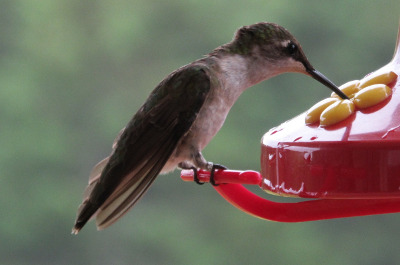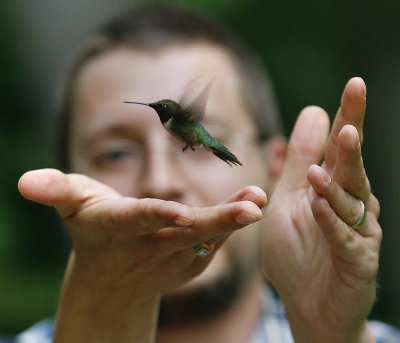Why We Band Hummingbirds

Banding in Canada began over 100 years ago. At that time it was the only way to identify individual birds, learn where they travelled, if they returned to the same place year after year, and to find out how long they live in their natural world. Technology has changed so much since then but banding is still the only way that we can continue collecting this important individual information.
A person needs a permit from the Canadian Wildlife Service to band birds in Canada. They must be specially trained by another permitted bander to make sure that they can identify and safely handle the birds. Once their mentor is satisfied that they will always put the safety of the birds first, the person has to be assessed by a second permitted bander before applying to CWS for their own banding permit.

Banders need to have excellent hand-eye coordination, good fine motor control and eyesight, and the ability to work quickly and accurately. They must also have good ethics and high standards. It is not acceptable to interfere with the research efforts of other banders or collect faulty data. The best banders continue to learn after they obtain a banding permit, assess their own practice on a daily basis, and make adjustments to their skills as necessary as time goes on.

Steve Kapusta releases a hummingbird after banding
Photo courtesy of the Windsor Star (July 2007)